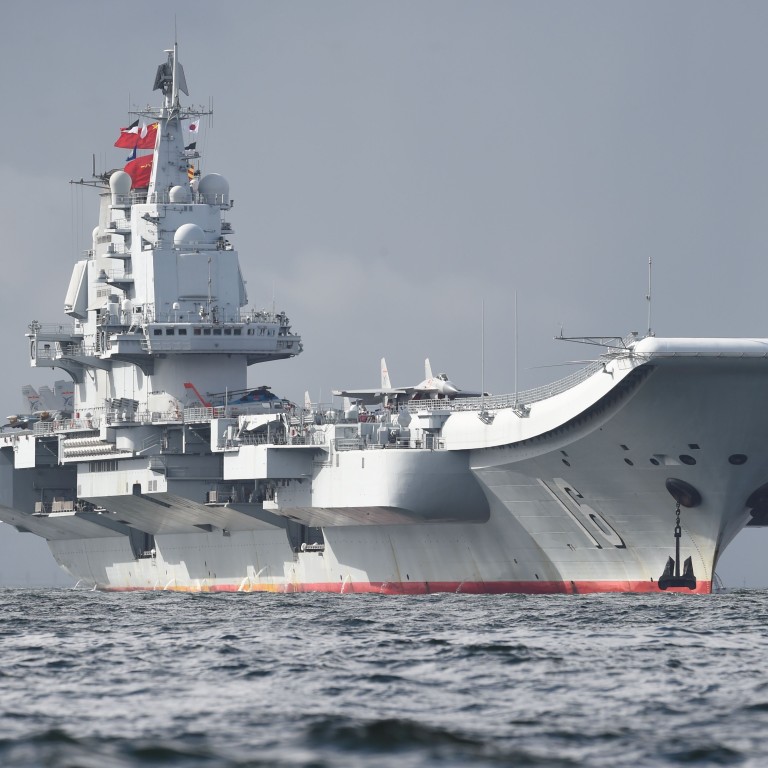
Chinese aircraft carrier Liaoning has no role to play in territorial disputes, Beijing says
- Ship was en route to Pacific for routine exercise when spotted in East China Sea on Tuesday, state media says
- PLA Navy has plenty of other military options to contest maritime conflicts over sovereignty
The appearance of a Chinese aircraft carrier in the East China Sea on Tuesday had nothing to do with the country’s territorial disputes in the region but was rather part of a routine training exercise, Beijing said.
Beijing said it was a routine mission that had been conducted in accordance with international law, and called on other nations to respect its right of passage.
Xiakedao, a social media account run by the overseas edition of Communist Party mouthpiece People’s Daily, said in a commentary that the Liaoning had no role to play in sovereignty disputes.
Instead its operations covered the four areas of maritime traffic protection, naval diplomacy, regional deterrence, and humanitarian aid and rescue missions.
“It is very unlikely that Chinese carriers will ever be involved in resolving maritime disputes with neighbouring countries,” the article said, adding that the People’s Liberation Army, China’s military, had plenty of other options, like long-range aircraft, missiles and destroyers, for such missions. “Why bother using aircraft carriers?” it said.
The Liaoning’s Pacific mission involved at least five other vessels – two guided missile destroyers, two frigates and a supply ship – according to photographs released by Japan’s defence ministry.
China forced to rethink navy spending as trade war bites
The presence of the 45,000-tonne Type 901 Hulun Lake fast combat support ship – the first time such a vessel has taken part in one of the carrier’s missions – suggested the Liaoning was headed for the high seas.
“This is probably going to be a long journey,” naval expert Li Jie said. “We will see how far they go [but] … the whole purpose of an aircraft carrier is that it can operate far out in the ocean.”
Having a supply ship as part of the strike group, which would allow the Liaoning to travel an extra 10,000 nautical miles or conduct thousands of hours of operations, was essential on such missions, he said.
The exercise is the carrier’s first Pacific deployment since undergoing a major maintenance programme earlier in the year.
The 300km (186 mile) wide Miyako Strait is the most convenient route for China’s navy and air force to access the Western Pacific through the so-called first island chain, which sits between the Chinese coast and the vast ocean.
“The Miyako Strait is wide enough and the sea conditions are usually stable,” Li said. “Pacific training missions will become routine and other Chinese carriers will probably also take this route.”
Details of new carrier revealed in sea trial footage
The Liaoning, accompanied by a fleet of eight vessels, first passed through the strait in December 2016 as part of its first Pacific mission. In April last year, the carrier and its escorts conducted an exercise in the ocean after reaching it via the Bashi Strait, which runs between the Philippines and Taiwan.
Chinese defence ministry spokesman Wu Qian said in 2017 that the navy would increase its activities in the Miyako Strait until the Japanese side “gets used to it”.

